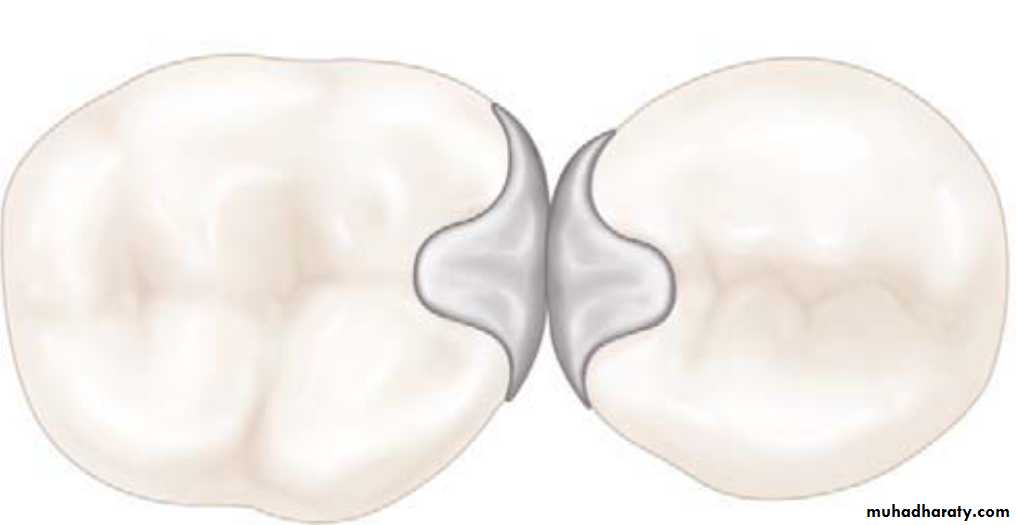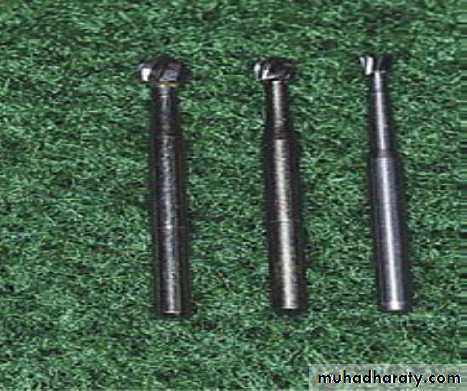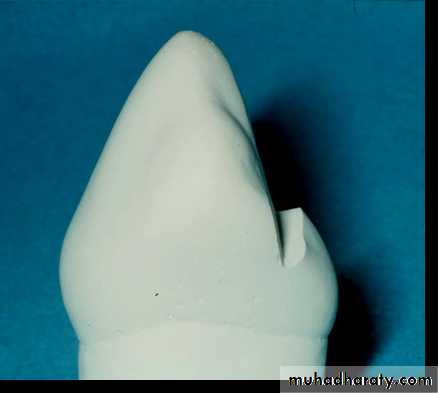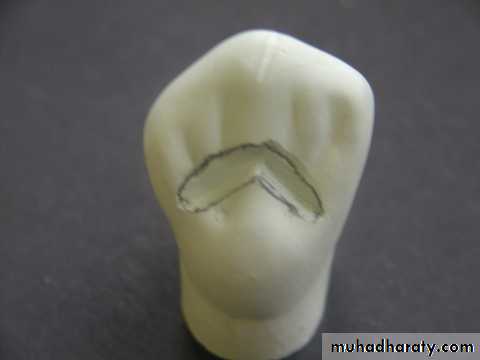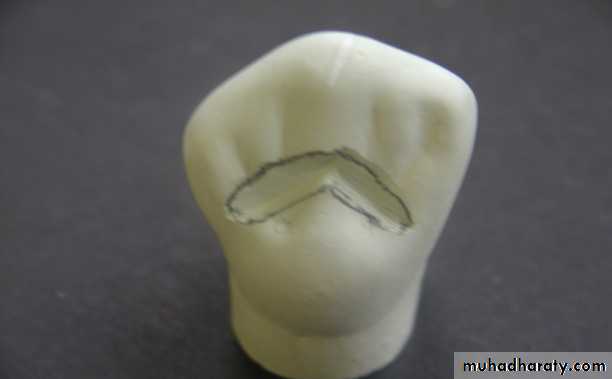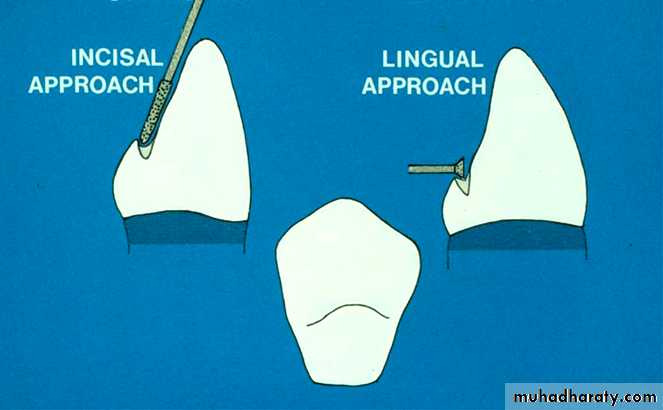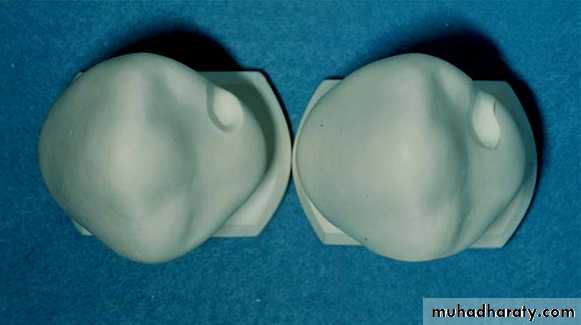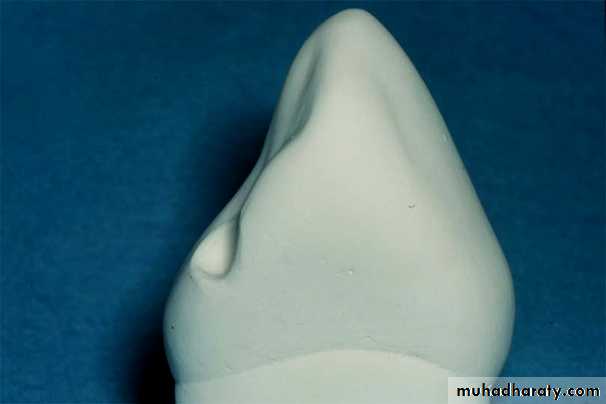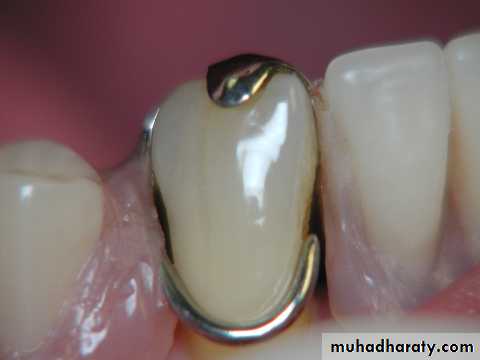Rest and Rest Seats
Dr.shanai M.Any component of a partial denture on a tooth surface that provides vertical support is called a REST.
The prepared surface of an abutment to receive the rest is called the REST SEAT.
The topography of any rest should restore the topography of the tooth that existed before the rest seat was prepared.
The Primary Purpose Of The Rest Is To
1. provide vertical support for the partial denture.2. Maintains components in their planned positions
3. Maintains established occlusal relationships by preventing spreading of the clasp arm
3. Prevents impingement of soft tissue
5. Directs and distributes occlusal loads to abutment teeth
Rest are designed by the surface of tooth prepared to receive them. thus they named as follows:
A. Occlusal Rest:
1. Occlusal Rest (Conventional)
2.Extended Occlusal Rest
3. interproximal Occlusal Rest
4. Internal Occlusal Rest
B. lingual Rest (Cingulum Rest)
C. Incisal Rest
D. implants as Rest
A. Occlusal Rest
This rest associated with the posterior teeth; molars and premolars.The form of occlusal rest and rest seat should be as follow:
• The outline form of an occlusal rest seat should be a rounded triangular shape with the apex toward the center of the occlusal surface
• It should be as long as it is wide, and the base of the triangular shape (at the marginal ridge) should be at least 2.5 mm for both molars and premolars.
• The marginal ridge of the abutment tooth at the site of the rest seat must be lowered to permit a sufficient bulk of metal for strength and rigidity of the rest and the minor connector.
• The floor of the occlusal rest seat should be apical to the marginal ridge and the occlusal surface should be concave, or spoon shaped
• The angle formed by the occlusal rest and the vertical minor connector from which it originates should be less than 90 degrees
• An angle greater than 90 degrees fails to transmit occlusal forces along the supporting vertical axis of the abutment tooth. This also permits slippage of the prosthesis away from the abutment, with possible tooth movement.
When occlusal rest seats are prepared next to edentulous space the morphology follows the conventional form. On the other hand, when a single occlusal rest seat is prepared next to an adjacent tooth the lingual line is flared more to provide additional space for the minor connector.
Extended Occlusal Rest
Used in situation in which the most posterior abutment is a mesially tipped molar, to minimize further tipping of the abutment and to ensure that the forces are directed down the long axis of the abutment. This rest should extend more than one-half the mesiodistal width of the toothInterproximal Occlusal Rest
These rest seats are prepared as individual occlusal rest seats, with the exception that the preparations must be extended farther lingually than is ordinarily accomplished .When such rest seats are prepared, care must be exercised to avoid reducing or eliminating contact points of abutment teeth. However, sufficient tooth structure must be removed to allow adequate bulk of the component for strength and to permit the component to be so shaped that occlusion will not be altered.
Advantage
• are used to prevent interproximal wedging by the framework.• In addition, the joined rests are designed to shunt food away from contact points.
Internal Occlusal Rests
Used for partial denture that is totally tooth supported, used for both occlusal support and horizontal stabilization.
Advantage
The main advantages of the internal rest are
it facilitates the elimination of a visible clasp arm buccally. Retention is provided by a lingual clasp arm
and permits the location of the rest seat in a more favorable position in relation to the tipping axis (horizontal) of the abutment.
Rest Seat Preaeration
Rests may be placed on sound enamel or on any restoration material that has been proven scientifically to resist fracture and distortion when subjected to applied forces.The preparation of occlusal rest seats always must follow proximal preparation that are necessary to provide proximal guiding planes and eliminate undesirable undercuts.
Occlusal rest seats in sound enamel may be prepared with burs and polishing points that leave the enamel surface as smooth as the original enamel
The larger round bur is used first to lower the marginal ridge and to establish the outline form of the rest seat.
A slightly smaller round bur then is used to deepen the floor of the occlusal rest seat and form the desired spoon shape.
The preparation is smoothed by a polishing point of suitable size and shape
Fluoride gel should be applied to abutment teeth following recountouring.
Occlusal rest seats in existing crowns and inlays generally are made somewhat larger and shallowness than those in enamel. But the floor of the rest seat should still be slightly inclined apically from marginal ridge. when this is not possible a secondary occlusal rest should be used on opposite side of tooth to prevent slipping of the primary rest.
Occlusal rest seat location in new restorations should be known when the tooth is prepared so that sufficient clearance may be provided for the rest seat within the preparation.
Lingual Rests
Lingual rests are associated with anterior teeth. the preferred site for rest is the occlusal surface of a molar or a premolar, so lingual rest used in case an anterior tooth may be the only abutment available for occlusal support of the denture.
Also an anterior tooth occasionally must be used to support an indirect retainer or an auxiliary rest. A canine is much preferred over an incisor for this purpose. When a canine is not present, multiple rests that are spread over several incisor teeth are preferable to the use of a single incisor.
The preparation of an anterior tooth to receive a lingual rest may be accomplished in one of two ways:
First method: A slightly rounded V is prepared on the lingual surface at the junction of the gingival and the middle one third of the tooth. The apex of the V is directed incisally. The mesio-distal length of the preparation should be a minimum of 2.5 to 3mm, labio-lingual width about 2mm, and incisal-apical depth a minimum of 1.5mm. This preparation of the tooth starts with an inverted cone shaped bur and progresses to a smaller tapered bur with a round end to complete the preparation.
Second method: A ball type of rest may be used in a prepared seat. Such a rest seat may be prepared in tooth surfaces with overly sufficient enamel thickness or may be prepared in restorations placed in teeth in which enamel thickness is inadequate. Ball type rests are better suited for conservative restorations (e.g., silver amalgam, pin inlays, composite resin) in anterior teeth than are the inverted V types of rest seats.
The seats of these rests are prepared in the same manner as that of the occlusal rest
There are several modifications to lingual rest seats prepared in natural teeth. The most satisfactory lingual rest from the standpoint of support is one that is placed on a prepared rest seat in cast restoration (crown). Also, individually cast alloy rest seat forms are used on teeth with unacceptable lingual contours. they are attached to cingulum rest seats with composite resin have also been successfully used as a conservative approach to forming rest seatsC. Incisal Rest And Rest Seats
An incisal rest seat is usually placed on the mesio- or disto-incisal angle of the incisor teeth with the deepest portion towards the centre of the tooth. It is predominantly used as an auxiliary rest or an indirect retainer.Mechanically, a lingual rest is preferable to an incisal rest, because the lingual rest is placed nearer to the center of rotation of the tooth and therefore, will have less tendency to tip the tooth.
Esthetically, the metal of the rest shows at the incisal edge
The incisal rest seat is prepared in the form of a rounded notch at the incisal edge of the teeth, with the deepest portion of the preparation apical to the incisal edge.
The rest seat should be approximately 2.5 mm wide and 1.5 mm deep so that the rest will be strong without having to exceed the natural contour of the incisal edge.
2.5mm
1.5mmD. implant as a rest
Implants can also be considered to serve as a rest when one takes advantage of the vertical stiffness characteristic they possess. In this application, they can serve to resist tissue ward movement alone and may be considered useful for retentive needs as well.When implant used as a rest, implants can serve to efficiently resist vertical movement and provide positive support. This use allows a low profile connection (i.e., close to the ridge),







